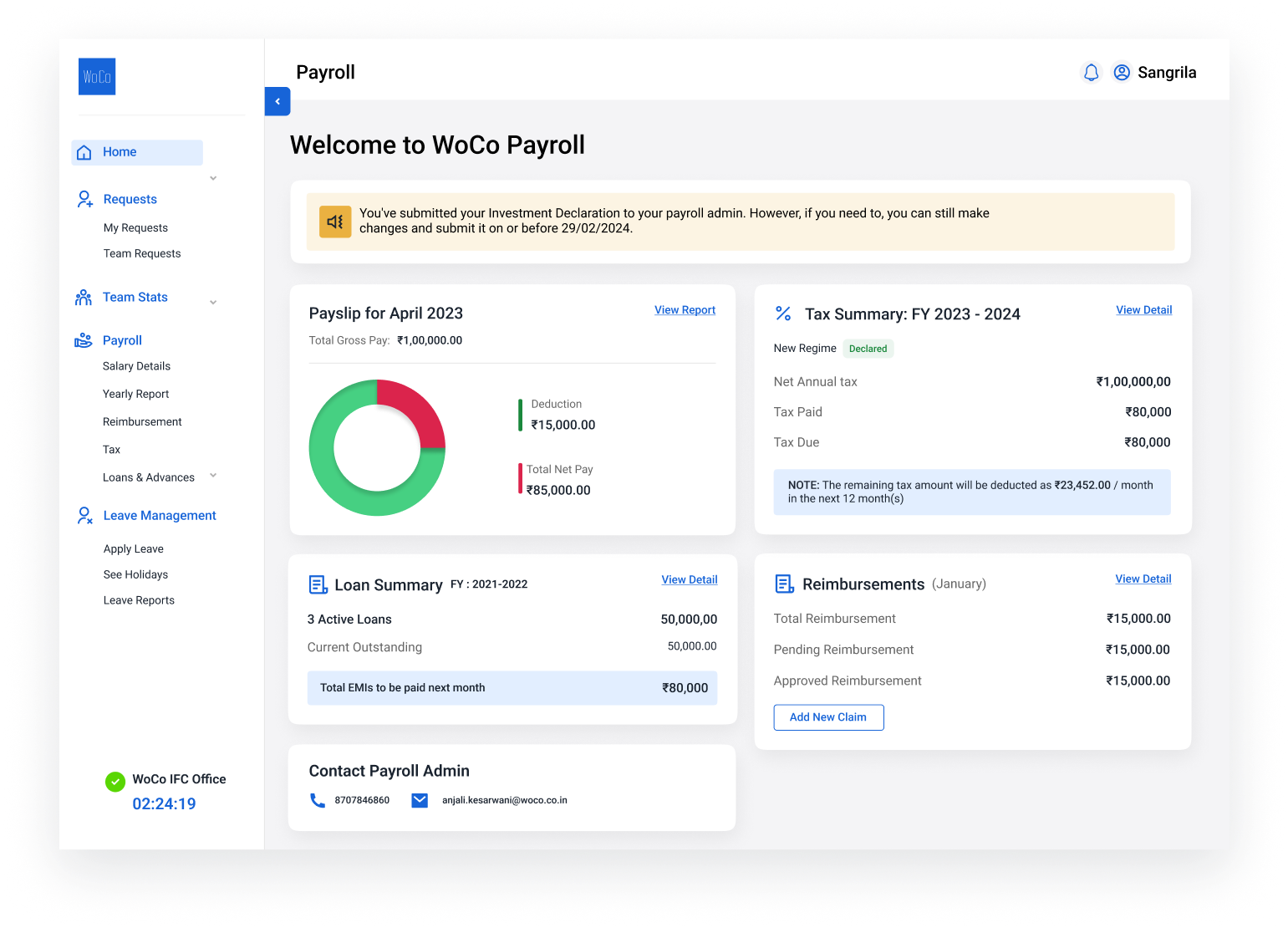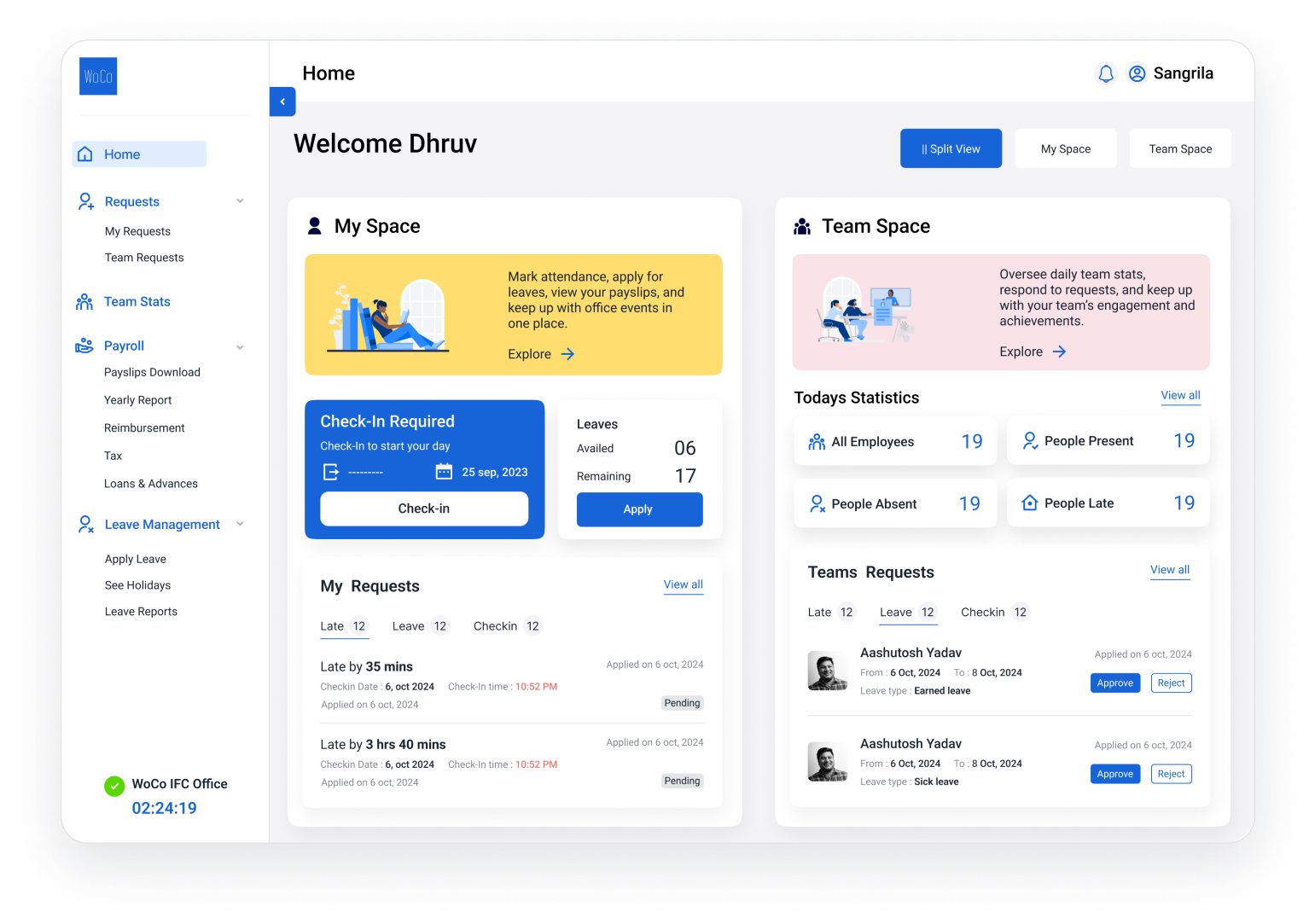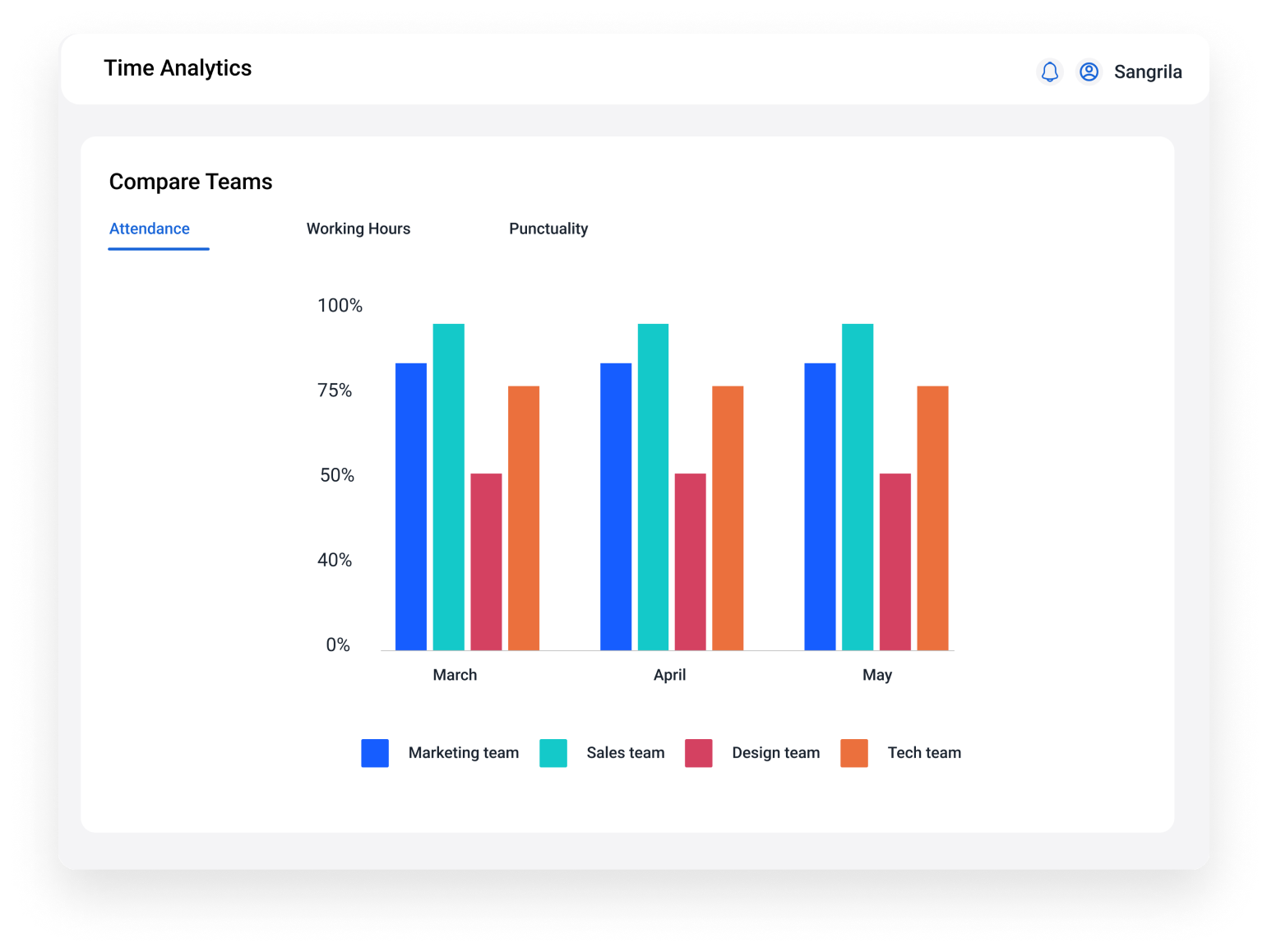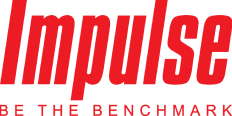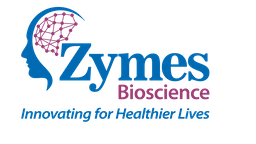| Primary Function | Primarily focuses on collecting, storing, and managing employee data, such as personal information, payroll records, and benefits details. | Provides a broader range of functions, managing the entire employee lifecycle, from recruitment to retirement, including payroll, performance, and learning. |
| Scope of Features | Limited to core HR tasks like employee record-keeping, attendance tracking, payroll management, and compliance reporting. | Offers an integrated suite of tools for HR functions such as recruitment, onboarding, offboarding, performance management, training, payroll, compliance, and employee engagement. |
| Automation Level | Automates basic, repetitive administrative tasks like data entry,leave tracking, payroll processing, and report generation. | Automates not only administrative tasks but also strategic HR activities such as talent acquisition, employee development, and performance tracking, providing end-to-end HR automation. |
| Employee Management | Primarily focused on data-driven tasks like maintaining employee records, handling payroll, and ensuring compliance. It improves data accuracy and reduces manual errors. | Involves active management of employees, focusing on improving employee engagement, performance reviews, career development, and succession planning, alongside data management. |
| Analytics & Reporting | Generates reports based on stored data, often related to compliance, payroll, and attendance. The level of insights is basic and often historical. | Provides advanced analytics, including predictive insights into employee performance, retention risks, and productivity trends, enabling data-driven decision-making. |
| Employee Self-Service | Often includes basic self-service portals where employees can update personal information, view pay slips, and track leave balances. | Offers more comprehensive self-service options, enabling employees to handle performance feedback, training modules, career development goals, and task management. |
| Main Benefits | Centralized employee data Automation of administrative tasks like payroll & attendance - Increased accuracy in record-keeping - Simplified compliance management | End-to-end HR management, from recruitment to offboarding - Improved employee engagement & productivity - Advanced analytics for better decision-making - Automation of strategic HR tasks like performance reviews and talent development |
| Best Suited For | Ideal for small to medium-sized businesses that primarily need to manage employee data and automate payroll, attendance, and compliance processes. | Suitable for businesses of all sizes, especially those with more complex HR needs. It’s beneficial for startups scaling rapidly and enterprises looking to manage every aspect of employee engagement and HR strategy. |



